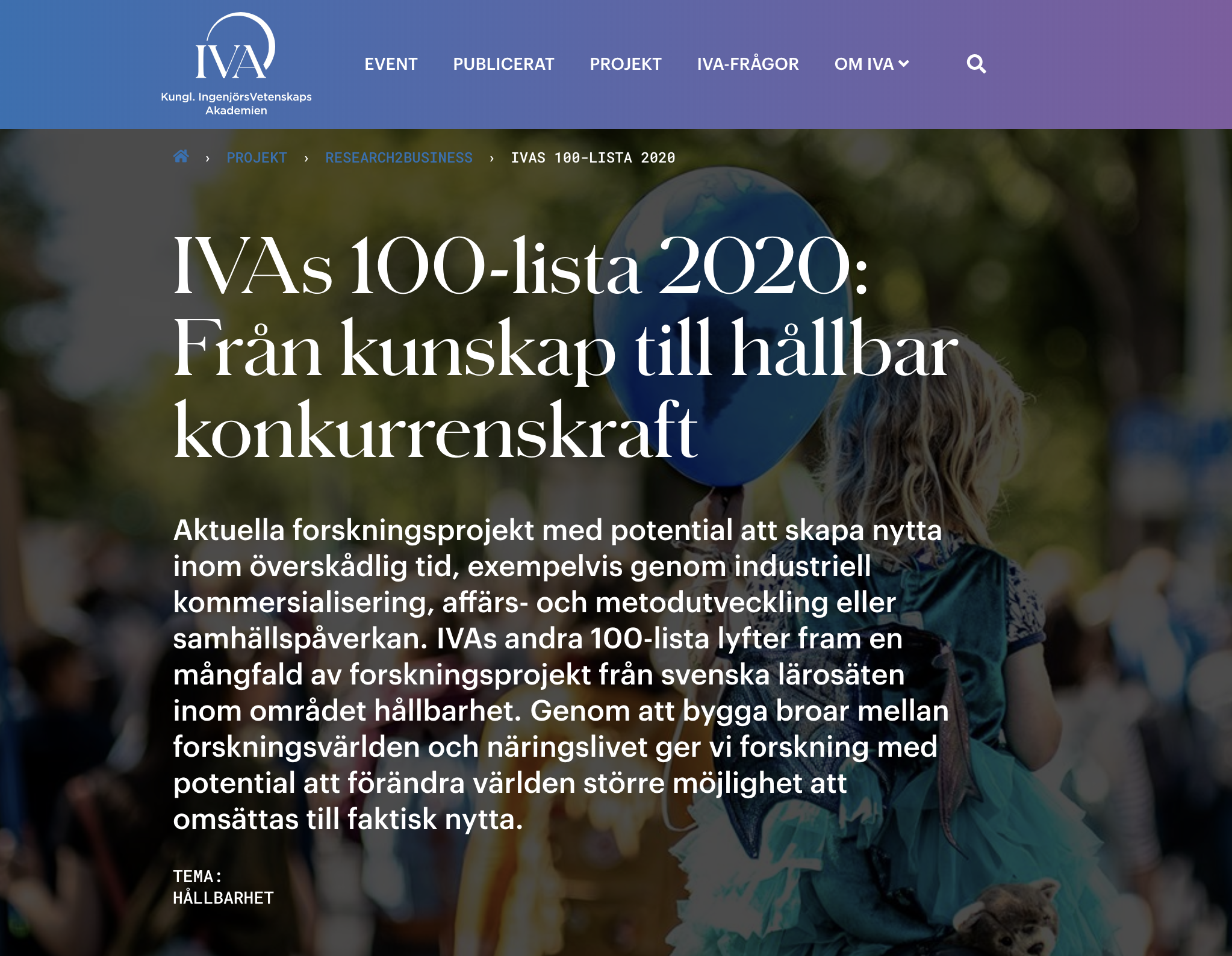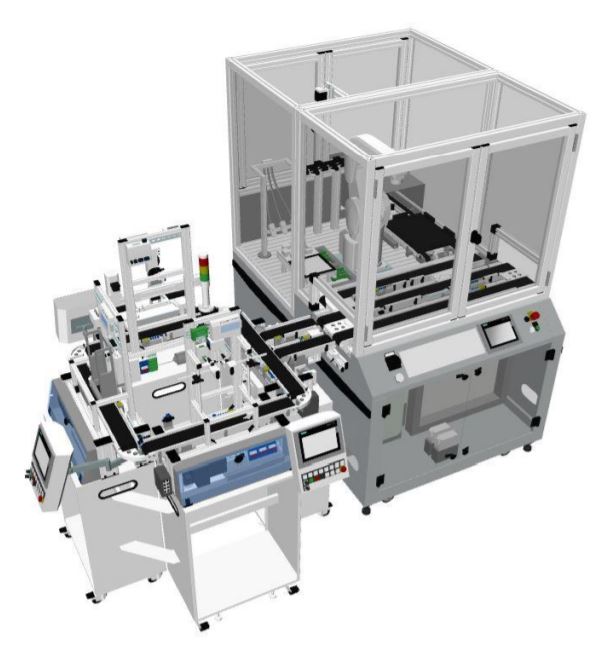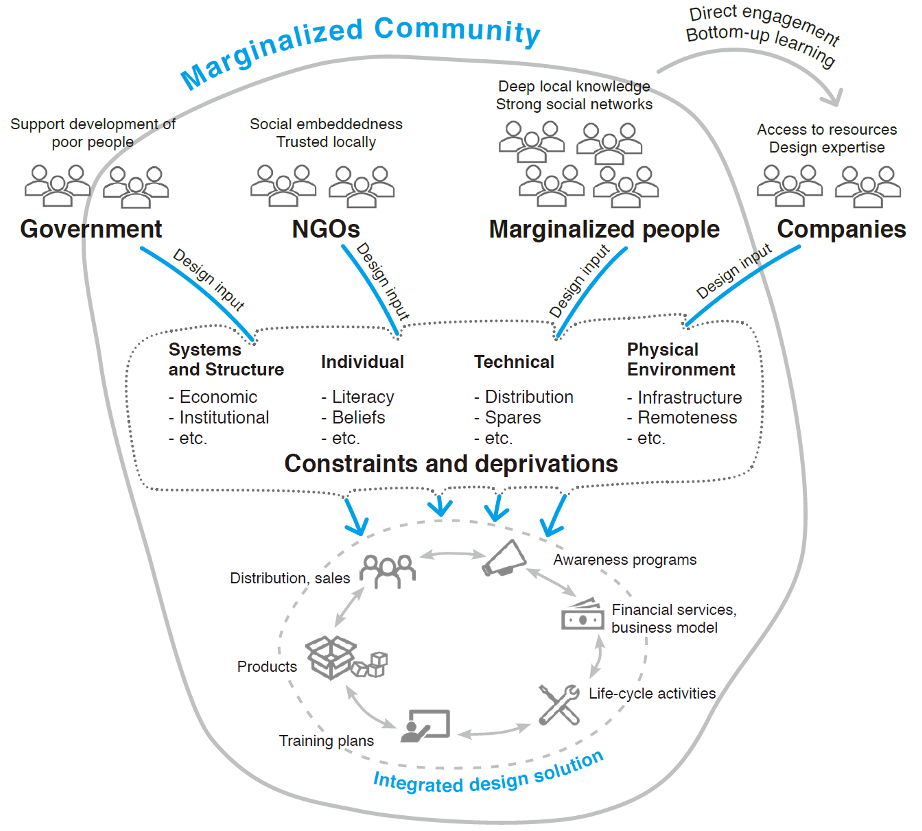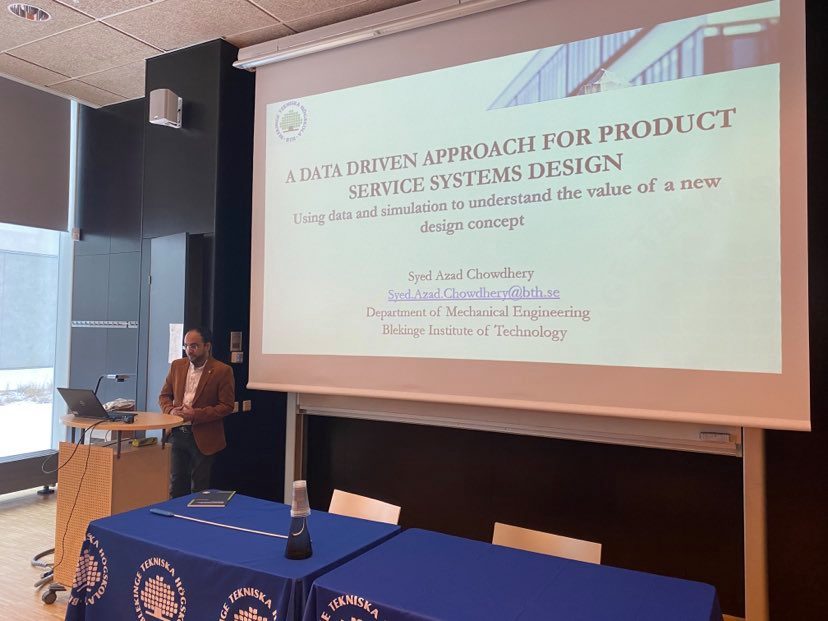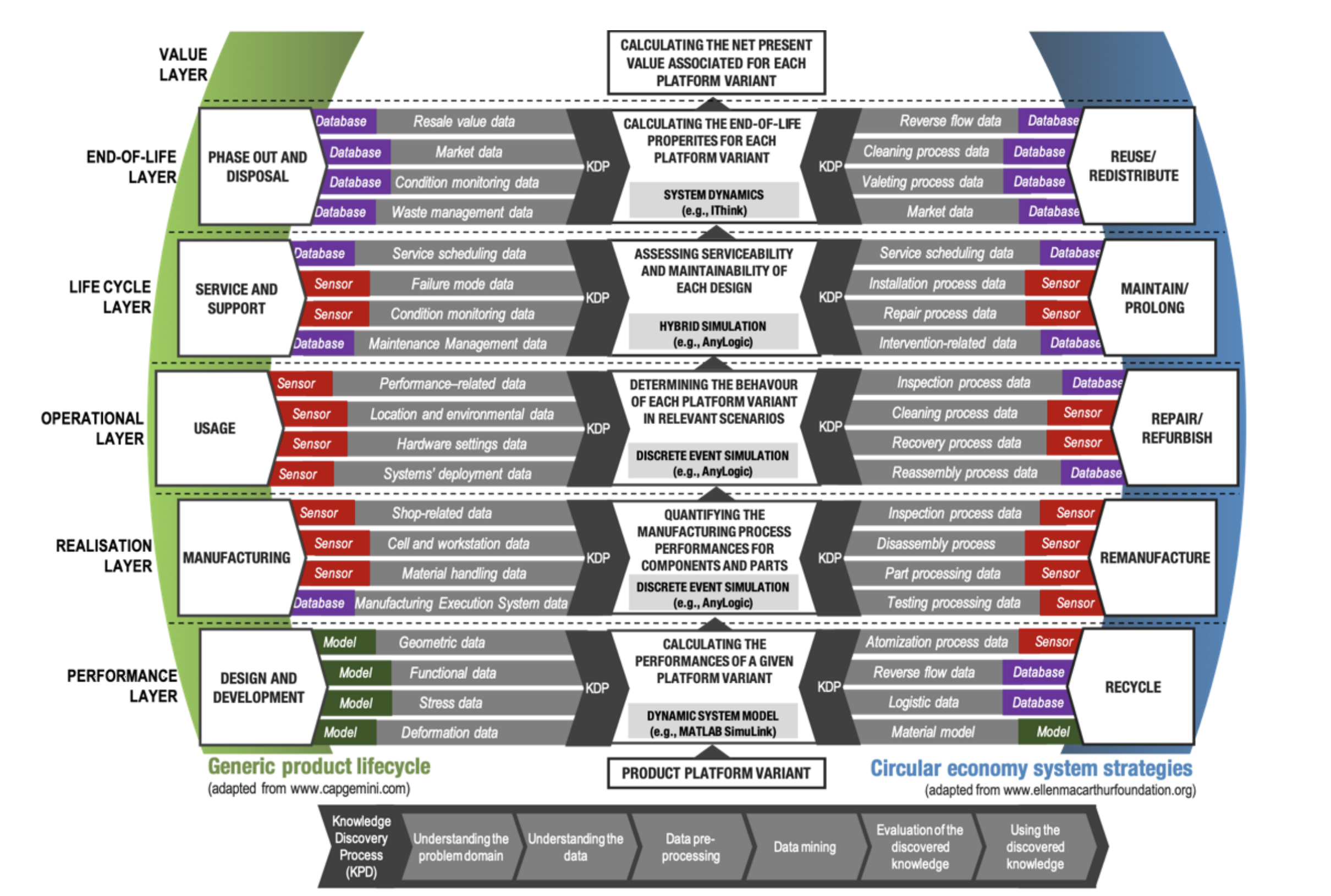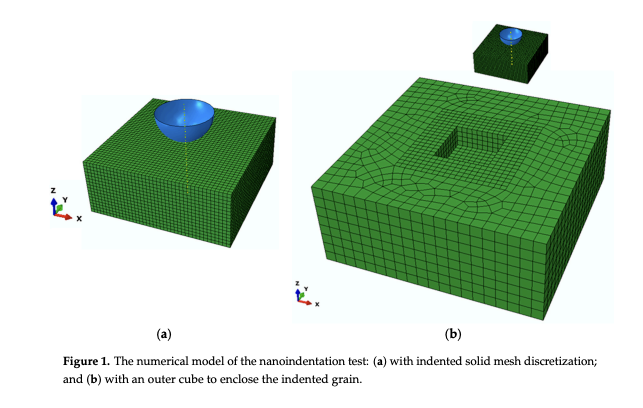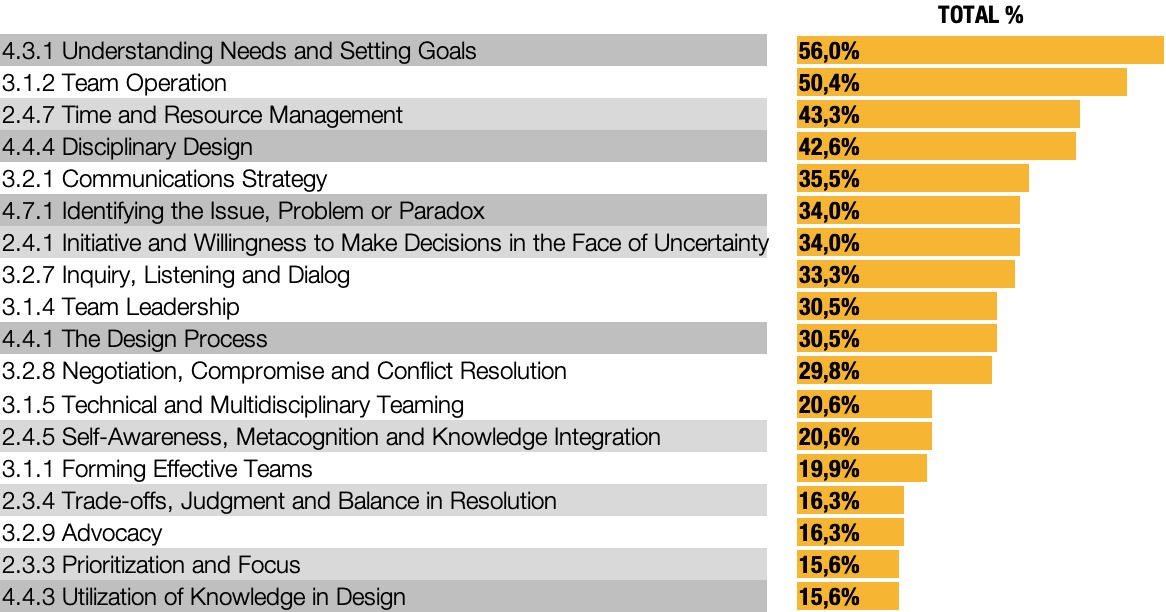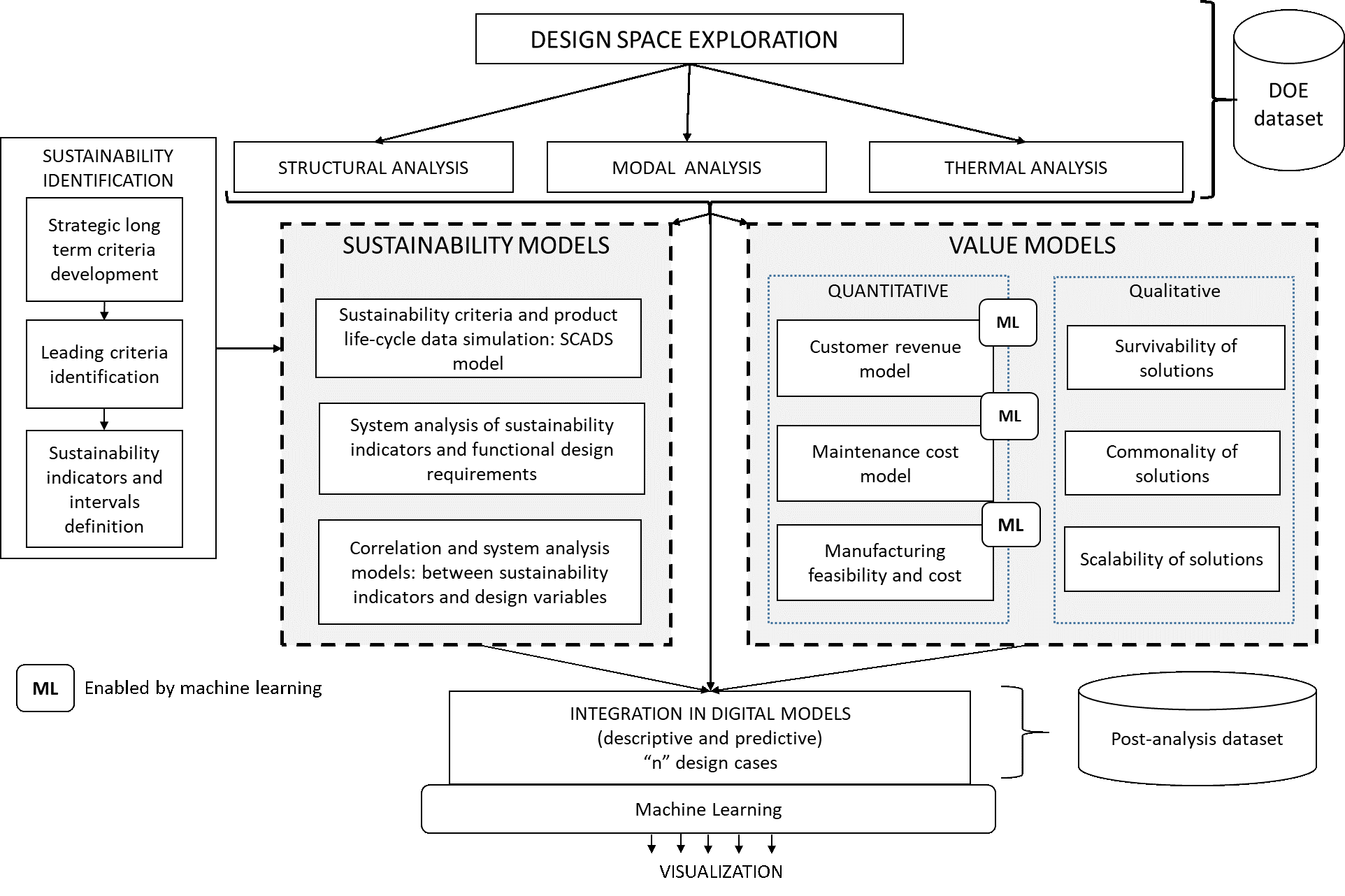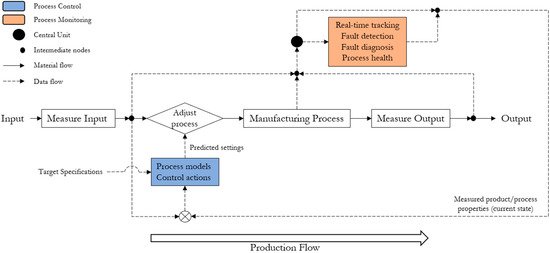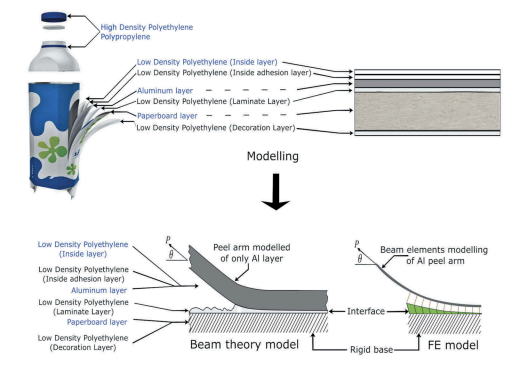Professor Tobias Larsson och teamet kring forskningsprofilen Model Driven Development and Decision Support är med på Kungl Ingenjörsvetenskapsakademien, IVA’s 100-lista för 2020! Forskningsprojekten på listan bedöms ha potential att utvecklas till innovationer, affärsutveckling eller annan form av nytta. Med på listan är även Sophie Hallstedt med den forskning inom profilen som är riktad mot Hållbarhetsdriven […]
Read More